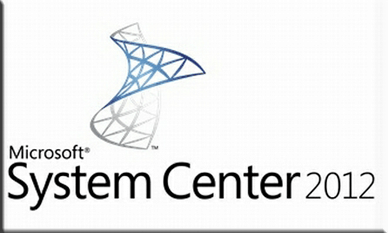
Module 1 - Windows 10 Technical Drilldown
- Support for new hardware
- Editions and licensing / activation
- Productivity Enhancements
- Security Enhancements
- User Interface changes
- Hyper-V enhancements
Module 2 - Planning for Windows 7, 8.1 and 10 Deployment
- OU Structure and Group Policy Strategy
- Naming Conventions and Structure
- Assessment and Readiness, MAPs/ACT
- Deployment Scenarios (Bare Metal, Refresh, Replace and In-Place Upgrades)
- Deployment Methods (PXE, Boot Media, Standalone Media)
- Automation level (Wizard Driven, Fully Automated, Dynamic and Hybrid)
Module 3 - Using Provisioning Packages
- Scenarios for provisioning packages
- Resetting OEM Setups
- Create and configure provisioning packages
- Apply Enterprise configurations (domain, policies, applications and settings)
Module 4 - Creating reference images for Windows 7, 8.1 and 10
- Why using MDT Lite Touch
- LTI System Requirements
- Creating the server structure
- Add operating system files
- Add Applications
- Create MDT Task Sequences
- Configure the deployment share
- Create Windows 7, 8.1 and 10 reference images
Module 5 - Troubleshooting MDT Lite Touch
- Error codes and log files
- Debugging MDT Lite Touch
Module 6 - MDT Lite Touch Deployment
- Prepare for Production Deployment
- Add Production Applications
- Add Drivers
- Create the Production Task Sequence and configure Rules
- Configure WDS Deploy Window 8.1 using PXE Setting Up DFS-R for Replication
- Replicating the Content
- Additional configurations for a distributed environment
Module 7 - Working with Hardware and Device Drivers
- General Driver Challenges
- Other Driver Challenges
- Hardware Support, UEFI configurations
- Windows Drivers
- Drivers Tips & Tricks
Module 8 - Setup ConfigMgr for Software Distribution
- System Requirements
- Minimum SQL Version
- Installation Options
- Post Configuration Items
- Base Configuration
Module 9 - ConfigMgr (Zero Touch) Deployment
- Integrate with MDT (Zero Touch)
- Create boot images
- Add operating system images
- Add ConfigMgr Applications
- Add Drivers for ConfigMgr
- Create Task Sequences
- Configure the rules, distribute content, and deploy task sequences
- Deploy Window clients using PXE
Module 10 - Troubleshooting ConfigMgr OS Deployment
- Debugging ConfigMgr
- PXE in a Lab environment
- Advanced Task Sequence Troubleshooting
Module 11 - Windows 10 inplace upgrade scenarios
- Upgrade features
- Inplace Upgrade Limitations
Module 12 - Using MDT Lite Touch for inplace upgrade
- Upgrading Windows 7 and Windows 8.1 clients to Windows 10
- Creating the Windows 10 upgrade task sequence
- Running the inplace upgrade process
- Monitor and verify the inplace upgrade process
Module 13 - Using ConfigMgr for inplace upgrade
- Upgrading Windows 7 and Windows 8.1 clients to Windows 10
- Creating the Windows 10 upgrade task sequence
- Running the inplace upgrade process
- Monitor and verify the inplace upgrade process
Module 14 - Using USMT for Refresh and Replace
- Can you afford not to migrate?
- USMT versions and scenarios
- User Data and Settings
- System Requirements
- Multi-User Migration Integration with ConfigMgr
- Support for additional settings
- Basic Custom XML-File
- Troubleshooting
Module 15 - Using Lite Touch to Refresh a Computer
- Refresh Windows clients using MDT Lite Touch
- Customize USMT Settings
Module 16 - Using ConfigMgr to Refresh a Computer
- Refresh Windows clients using MDT Lite Touch
- Customize USMT Settings
Module 17 - Using MDT Lite Touch to Replace a Computer
- Create and run a Replace Task Sequence
- Verify user state migration
Module 18 - Using ConfigMgr to Replace a Computer
- Configure State Migration Point
- Create and run a Replace Task Sequence
- Verify user state migration
Module 19 - MDT Lite Touch, Advanced Customizations
- Create a test environment
- Using the MDT Deployment database
- Assigning Applications using Roles
- Use a stored procedure
- Use a UserExit script
Module 20 - ConfigMgr, Advanced Customizations
- Create a test environment
- Using the MDT Deployment database
- Assigning Applications and Packages
- using Roles Use a stored procedure
- Use a UserExit script
Module 21 - Windows Setup Engine
- Image Based Setup
- Windows Configuration passes
- Understanding WSIM
- Component based servicing
- Windows Device Drivers
Module 22 - Managing Windows Clients in the Enterprise
- Using Roaming Profiles
- Using Redirected Folders
- Using Group Policy Preferences
- Deploy Applications using ConfigMgr
- Using User Experience Virtualization (UE-V)
- Using App-V applications
- Configuring Software Updates (WSUS and ConfigMgr)
This course is intended for IT-pros and administrators that wants to build real world deployment and management solutions using ConfigMgr, WDS and MDT.
Before attending this course, students should have:
- Windows deployment experience, sysprep, imaging, and drivers.
- Basic understanding of Active Directory, and Software Distribution using ConfigMgr 2007 or ConfigMgr 2012. Scripting experience (VBScript, PowerShell) is helpful but not a requirement.
After this training you will be able to install and customize modern deployment and management solutions based on ConfigMgr, WDS and MDT.
 Print Page
Print Page